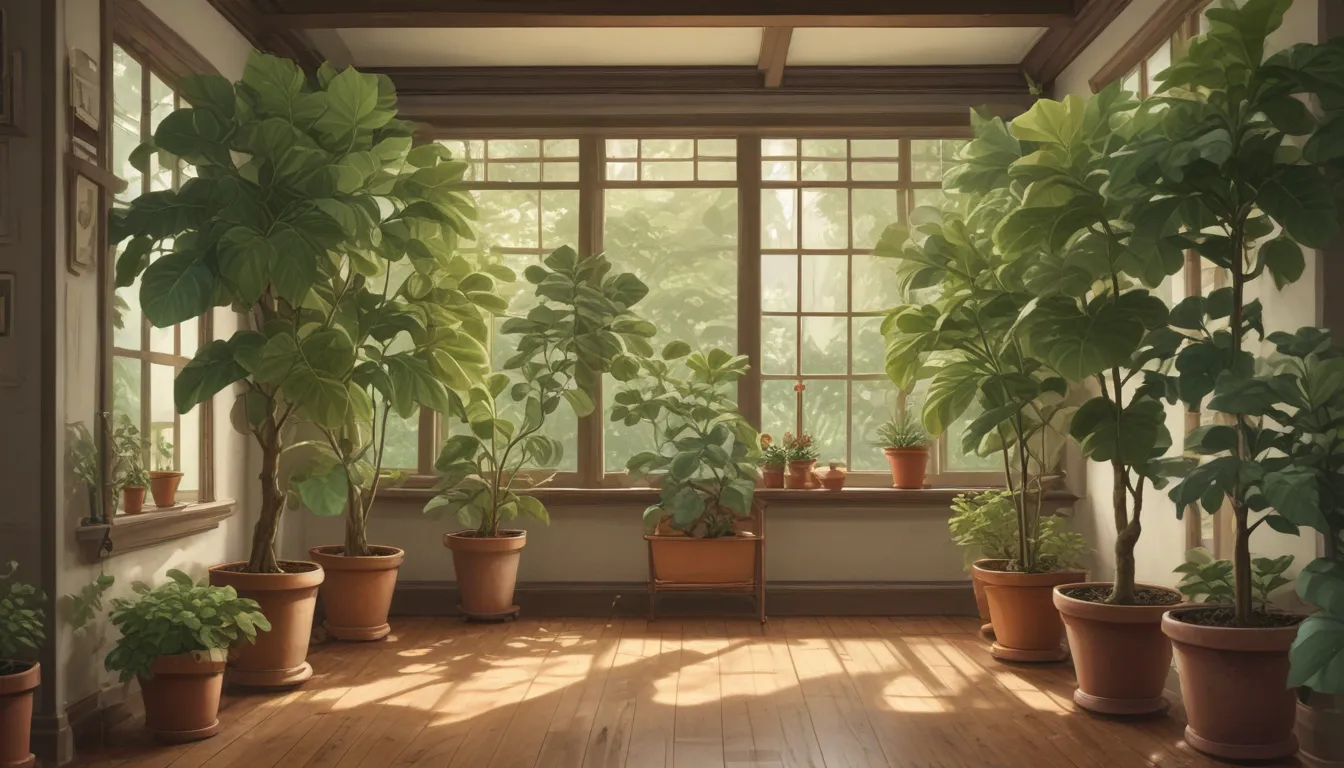How to Successfully Grow and Care for Fiddle-Leaf Fig Trees

Have you ever admired the stunning beauty of a fiddle-leaf fig tree in a magazine, hotel lobby, or trendy designer’s Instagram account and wished you could grow one of your own? These dramatic plants, also known as banjo figs or lyre leaf trees, are a captivating addition to any indoor space, with their architectural silhouette and glossy prehistoric-looking leaves.
While fiddle-leaf figs are undoubtedly striking, they are also notoriously finicky when it comes to care. They can be a bit challenging to cultivate compared to other houseplants, but with the right knowledge and care, they can thrive and become a beloved member of your plant family.
Think of caring for a fiddle-leaf fig as akin to welcoming a new pet into your home. It will require time, attention, and a bit of patience, but the rewards of nurturing these magnificent plants make it all worthwhile.
In this comprehensive guide, I’ll share all the tips and tricks I’ve learned over the years to help you successfully grow and care for your fiddle-leaf fig. From cultivation and propagation to pruning and maintenance, I’ll cover everything you need to know to keep your plant healthy, happy, and looking its best.
Cultivation and History
Before we delve into the care and maintenance of fiddle-leaf fig trees, let’s take a moment to appreciate their fascinating history. Originating from the lowland rainforests of western Africa, these plants can grow up to 40 to 50 feet tall in their natural habitat.
When grown outdoors in subtropical climates like USDA Hardiness Zones 9 to 11, they typically reach heights of 15 to 25 feet. However, in indoor settings, fiddle-leaf figs are much more manageable, with standard plants averaging around 10 feet in height and dwarf varieties available for smaller spaces.
Notable Features:
- Fiddle-leaf fig trees are part of the strangler fig group, known for their unique growth habits.
- Their distinctive leaves, resembling violins or lyres, give them their common name.
- The latex sap in their stems and branches can irritate the skin, so wear gloves when handling them.
- Fiddle-leaf figs produce small, tart fruits in their native habitat, but they are not typically grown for fruit indoors.
Fiddle-Leaf Fig Propagation
While growing fiddle-leaf figs from seed is challenging and not recommended for beginners, propagation via air layering or stem cuttings is a more accessible method to expand your collection. Here’s how you can propagate your fiddle-leaf fig:
Air Layering:
- Select a healthy stem section and strip away the leaves.
- Make horizontal and vertical cuts in the stem, apply rooting hormone, and wrap with moist sphagnum moss.
- Enclose the moss-wrapped section in plastic to promote root growth.
- After roots have formed, cut below the plastic and transplant the rooted section.
Stem Cuttings:
- Select a healthy branch with multiple nodes and remove the lower leaves.
- Dip the cut end in rooting hormone and plant in moist soil or water.
- Keep the cutting in indirect sunlight and maintain moisture until roots develop.
- Transplant the cutting into a larger container once roots are established.
Transplanting Tip:
- When repotting, choose a container with adequate drainage and fill with a well-draining soil mix.
- Maintain the same planting depth during transplanting to avoid root damage.
How to Grow Fiddle-Leaf Figs
Now that you’ve successfully propagated your fiddle-leaf fig, it’s essential to provide the right conditions for its optimal growth. Here are some tips to help your plant thrive:
- Water: Monitor soil moisture and allow the top inch to dry out between watering to prevent root rot.
- Light: Provide bright, indirect sunlight with limited morning direct sun to avoid leaf burn.
- Temperature: Avoid drastic temperature fluctuations and maintain a consistent environment for healthy growth.
- Humidity: Increase humidity levels in dry climates through misting, humidifiers, or pebble trays.
- Fertilizing: Use a balanced fertilizer with a 3-1-2 NPK ratio to promote leaf growth and overall health.
- Repotting: Regularly check roots for overcrowding or circling and repot as needed to prevent stress.
Quick Reference Growing Guide:
- Plant Type: Ornamental shrub/tree
- Native to: Western Africa
- Hardiness (USDA Zone): 9-11 (outdoors)
- Exposure: Bright, indirect sunlight
- Water Needs: Moderate
- Maintenance: High
- Common Pests: Fungus gnats, mealybugs, spider mites
- Common Diseases: Botrytis blight, root rot
Pruning and Maintenance
In addition to providing the right care, regular pruning and maintenance are essential to keep your fiddle-leaf fig tree healthy and aesthetically pleasing. Here’s how to maintain your plant:
– Dust Leaves: Regularly wipe down leaves with a damp cloth to remove dust and debris.
– Rotate Plant: Ensure even growth by rotating the plant periodically to prevent leaning.
– Trimming: Prune to control height, shape, and promote air circulation within the canopy.
– Symmetry: Maintain a balanced appearance by trimming lopsided growth and removing damaged leaves.
Disease Management:
- Botrytis Blight: Prevent grey mold by avoiding excessive moisture and maintaining proper airflow.
- Root Rot: Treat soggy soil conditions to prevent root damage and leaf drop due to overwatering.
By following these maintenance tips and disease prevention strategies, you can keep your fiddle-leaf fig tree looking vibrant and thriving for years to come.
Fiddle-Leaf Fig Cultivars
For those looking to add unique variations to their indoor plant collection, consider exploring different fiddle-leaf fig cultivars:
– Bambino: Compact variety with smaller leaves, ideal for limited spaces.
– Compacta: Smaller stature with half-sized leaves, perfect for slower growth.
– Variegated: Multicolored leaves with creamy yellowish-gold edges, suitable for lower light conditions.
By selecting cultivars that suit your space and preferences, you can enhance the visual appeal of your indoor garden with these distinct fiddle-leaf fig varieties.
In conclusion, growing and caring for fiddle-leaf fig trees may present some challenges, but with the right knowledge and dedication, you can cultivate these stunning plants successfully. By understanding their unique growing requirements, practicing proper maintenance techniques, and watching for pests and diseases, you can enjoy the beauty and elegance of fiddle-leaf figs in your home for years to come.
So go ahead, name your new plant, chat with it occasionally, and watch it flourish under your nurturing care. With the valuable tips and information provided in this guide, you’re well-equipped to become a confident fiddle-leaf fig hero. Happy growing!





